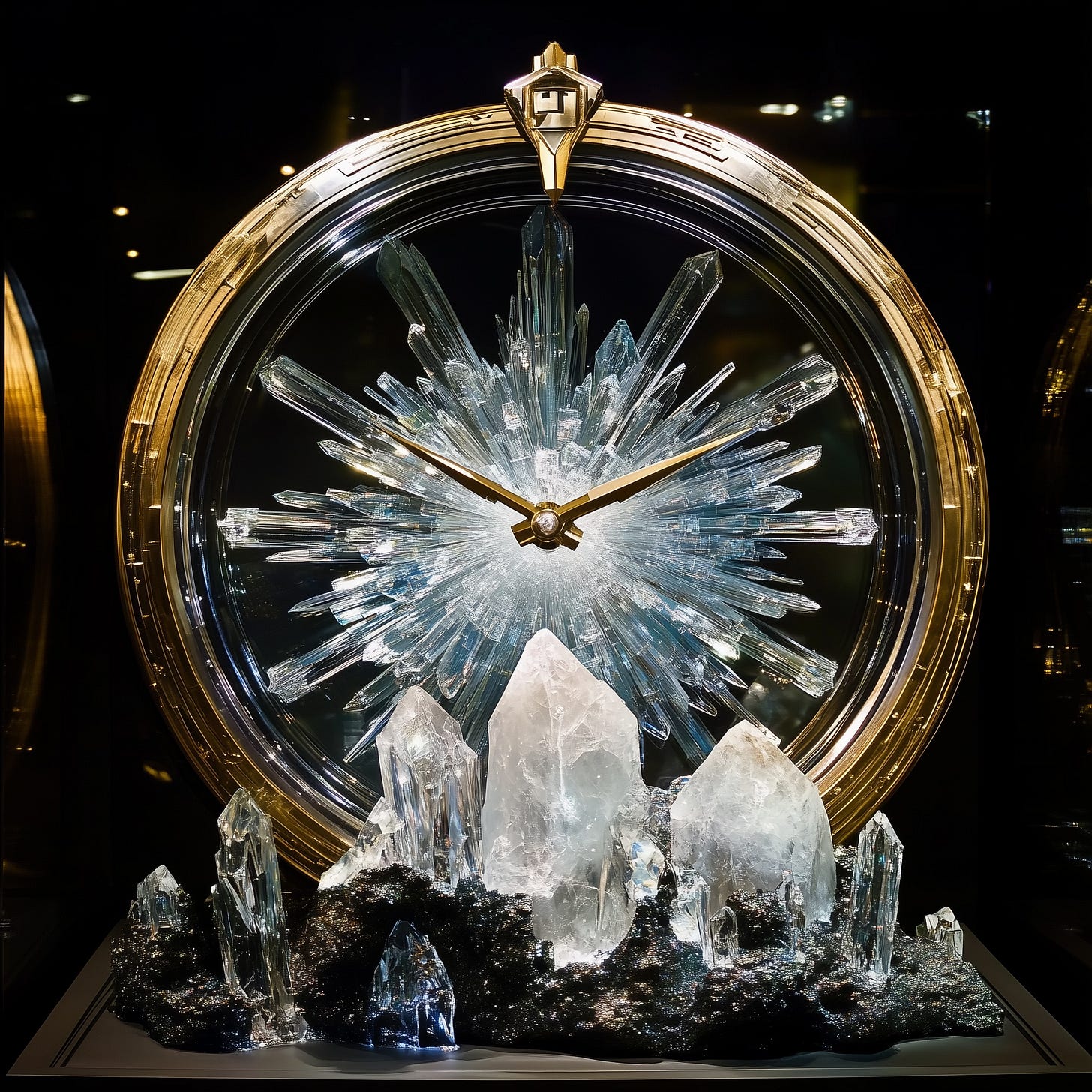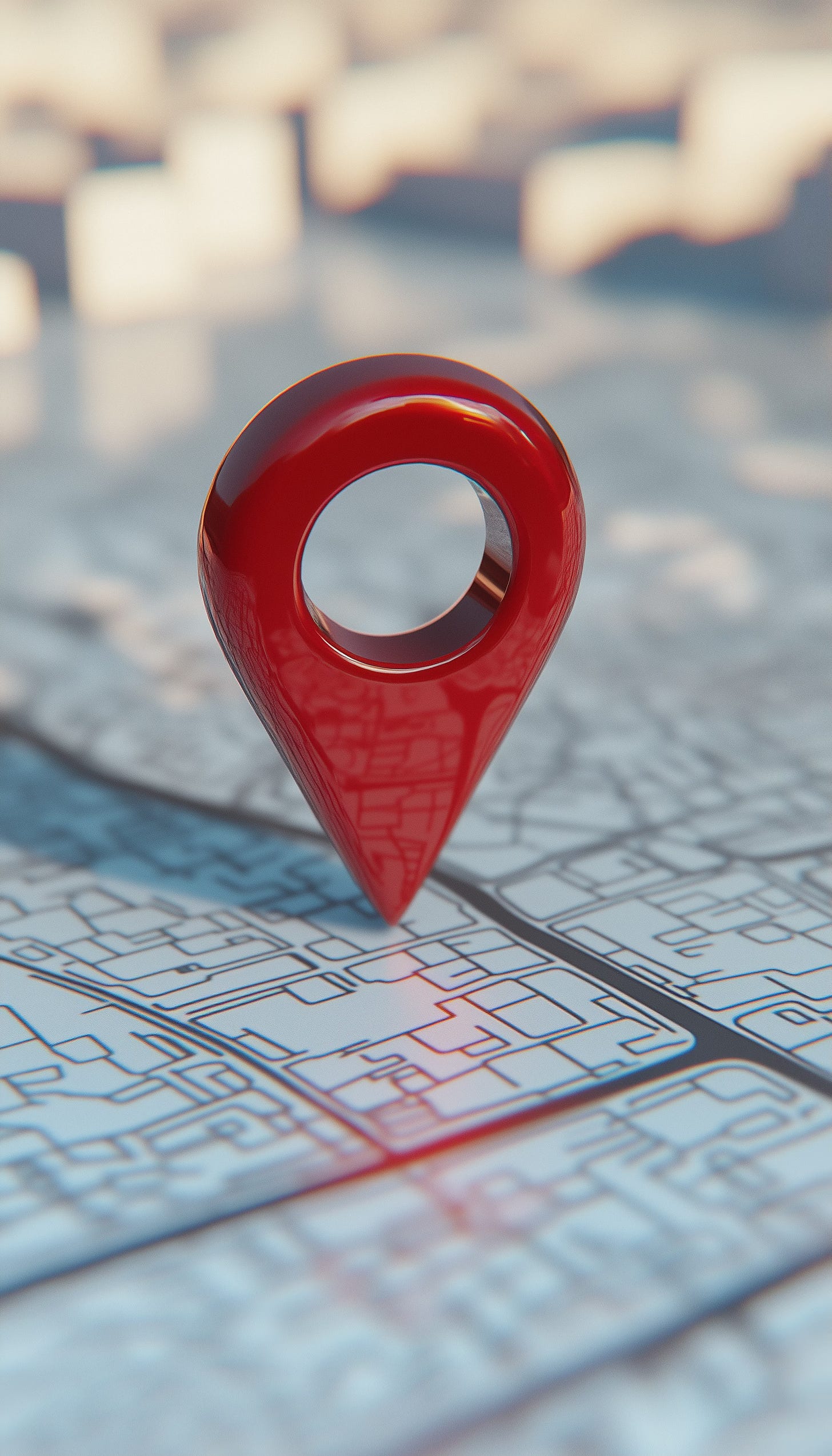Timekeeping has come a long way, from sundials and mechanical clocks to the ultra-precise devices of today. Modern clocks aren’t just tools for telling time—they are marvels of technology that power critical systems like GPS, scientific research, and global communication. At the heart of these systems are three key players: quartz, cesium, and strontium.
Each represents a leap forward in precision, with strontium clocks so accurate they can measure the effect of gravity on time. Let’s explore how these elements revolutionize our understanding of time and how they shape our world.
Quartz: The Everyday Timekeeper
Quartz clocks and watches revolutionized timekeeping in the 20th century. The piezoelectric effect in quartz crystals allows them to vibrate at a stable frequency when electrified, making them incredibly reliable for consumer use.
The Shape and Science Behind Quartz
Quartz crystals used in timekeeping are typically cut into the shape of a tuning fork—a design that optimizes their ability to vibrate consistently. When an electric charge from a battery or circuit is applied, the quartz crystal vibrates at a precise frequency, usually 32,768 times per second. This vibration acts like a metronome, keeping the clock in sync.
The piezoelectric property of quartz means that when the crystal vibrates, it generates a tiny electric signal. This feedback loop between the applied charge and the crystal’s oscillations ensures the timing remains steady and reliable.
Quartz in Smartphones and Computers
In modern devices, quartz isn’t just about telling time—it’s a backbone for synchronization and precision.
Clock Chips: A quartz crystal oscillator is embedded in almost every smartphone, Fitbit, and computer. It regulates the internal clock, which manages everything from system processes to app functions.
Synchronization: Quartz ensures that the timing of a smartphone’s processor, memory, and storage systems is perfectly aligned. This synchronization is vital for multitasking, seamless user experiences, and network operations.
Data Transfers: Precise timing from quartz oscillators enables accurate transmission of data packets across the internet, ensuring everything from video streaming to online gaming runs smoothly.
Quartz in Appliances and Small Devices
Quartz crystals are also found in everyday household items, delivering reliability and efficiency:
Microwave Ovens: Quartz timers help regulate cooking times, ensuring consistent results.
Washing Machines: Timekeeping ensures cycles start and stop correctly.
Thermostats: Quartz timing in programmable thermostats controls heating and cooling schedules.
Digital Cameras: Quartz oscillators help synchronize image capture with light sensors for crisp photos.
These applications highlight how quartz brings precision and affordability to the devices we rely on daily.
Cesium: The Gold Standard of Precision
If quartz made timekeeping practical, cesium made it exact. Cesium clocks, invented in 1955, measure time by monitoring the transitions between energy states in cesium atoms. These oscillations occur at a precise frequency of 9,192,631,770 cycles per second, which defines the second in the International System of Units (SI).
Applications of Cesium
GPS Technology: Cesium clocks on satellites broadcast ultra-precise timing signals to GPS receivers on Earth.
Telecommunications: Synchronizing global networks and ensuring smooth data transmission.
Scientific Research: Enabling experiments in physics and astronomy.
Historical and Cultural Aspects
Cesium’s discovery in 1860, named after the Latin word caesius (sky blue), paved the way for its critical role in modern science. Cesium clocks form the backbone of Universal Coordinated Time (UTC), the global standard for timekeeping.
Strontium: Time at the Pinnacle of Precision
Strontium atomic clocks represent the cutting edge of timekeeping. These clocks are so accurate they can detect variations in time caused by gravitational differences, as predicted by Einstein’s theory of relativity. For example, time moves slightly faster at the top of a mountain than at sea level due to weaker gravity.
Applications of Strontium
Geophysical Measurements: Detecting gravitational differences with incredible sensitivity.
Space Exploration: Refining measurements of time and distance in space missions.
Fundamental Physics: Testing the limits of Einstein’s theories and probing the nature of the universe.
A Glimpse Into the Future
Strontium clocks are not yet mainstream but have the potential to revolutionize everything from GPS accuracy to our understanding of the universe. They demonstrate how timekeeping isn’t just about measuring seconds—it’s about unraveling the mysteries of space and time.
The Benefits of Advanced Timekeeping
Unparalleled Precision: Atomic clocks measure time with unimaginable accuracy, critical for scientific and technological advancements.
GPS Accuracy: Enables pinpoint navigation for everything from personal devices to airplanes and ships.
Global Synchronization: Keeps telecommunications, financial networks, and power grids running smoothly.
Scientific Discovery: Facilitates experiments in physics, astronomy, and geophysics.
Relativity in Action: Strontium clocks prove Einstein’s theories in everyday applications, showcasing the link between time and gravity.
How GPS Relies on Atomic Clocks
GPS satellites orbiting Earth carry cesium and rubidium atomic clocks to maintain accurate timing. These clocks broadcast signals that GPS receivers on the ground use to calculate position. Here’s how it works:
Timing Signals: Satellites send time-stamped signals.
Distance Measurement: Receivers calculate how long the signal takes to arrive.
Triangulation: By combining signals from multiple satellites, GPS devices pinpoint location.
Corrections: Atomic clocks account for factors like relativity, ensuring precise navigation.
Without atomic clocks, GPS accuracy would degrade to within kilometers instead of meters—a nightmare for navigation!
A Final Thought: The Cultural Significance of Time
From quartz watches adorning our wrists to cesium and strontium clocks exploring the limits of relativity, timekeeping reflects humanity’s ingenuity and desire to measure the immeasurable. These technologies don’t just keep us punctual—they connect us to the universe, allowing us to navigate space, study the stars, and understand gravity’s effect on time itself.
As we continue to refine our mastery of time, who knows what discoveries await? The next leap forward might not just tell us when we are but also where we’re headed in the ever-expanding story of the universe.









